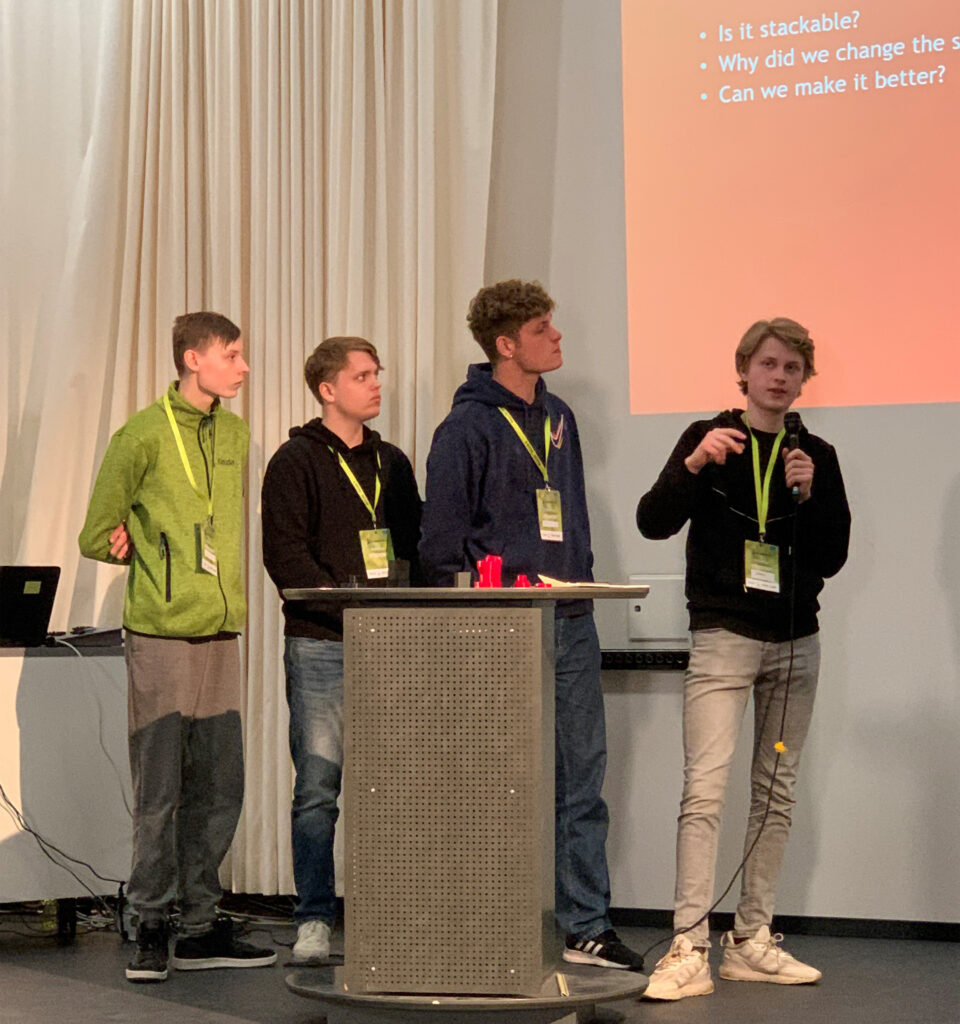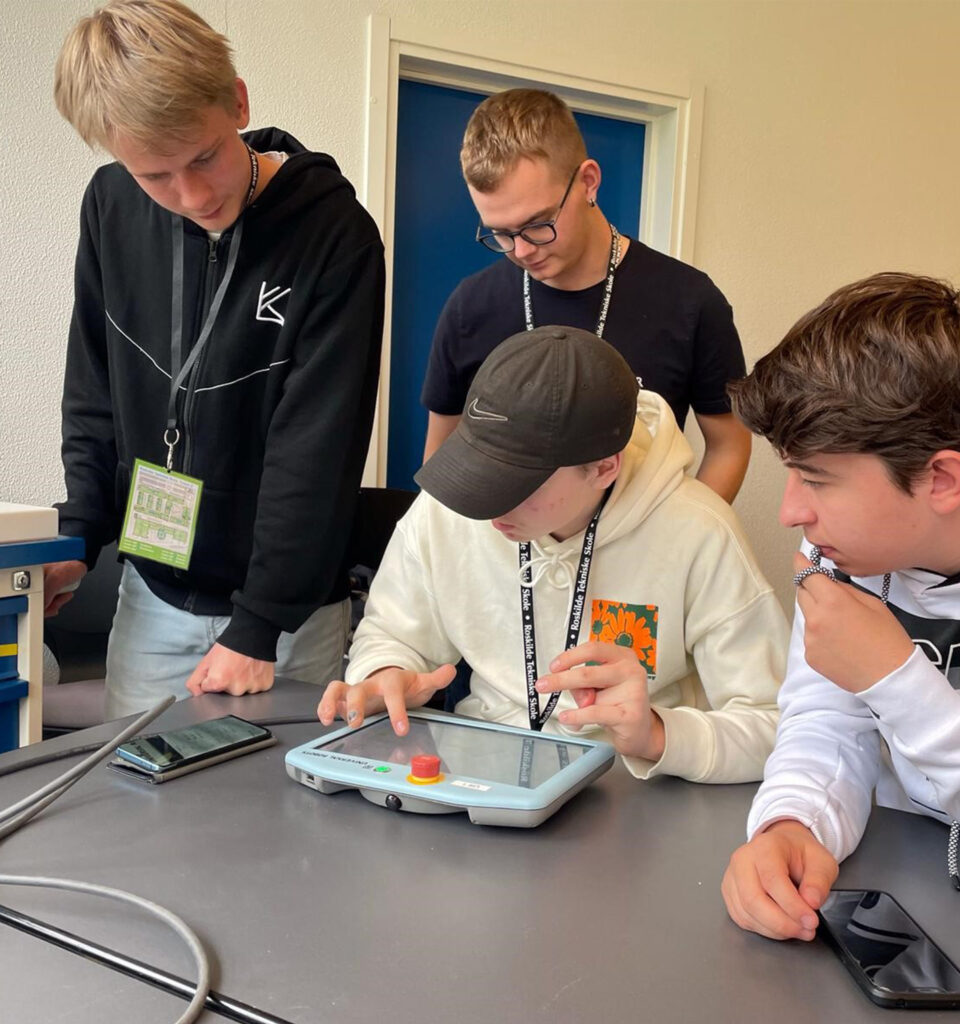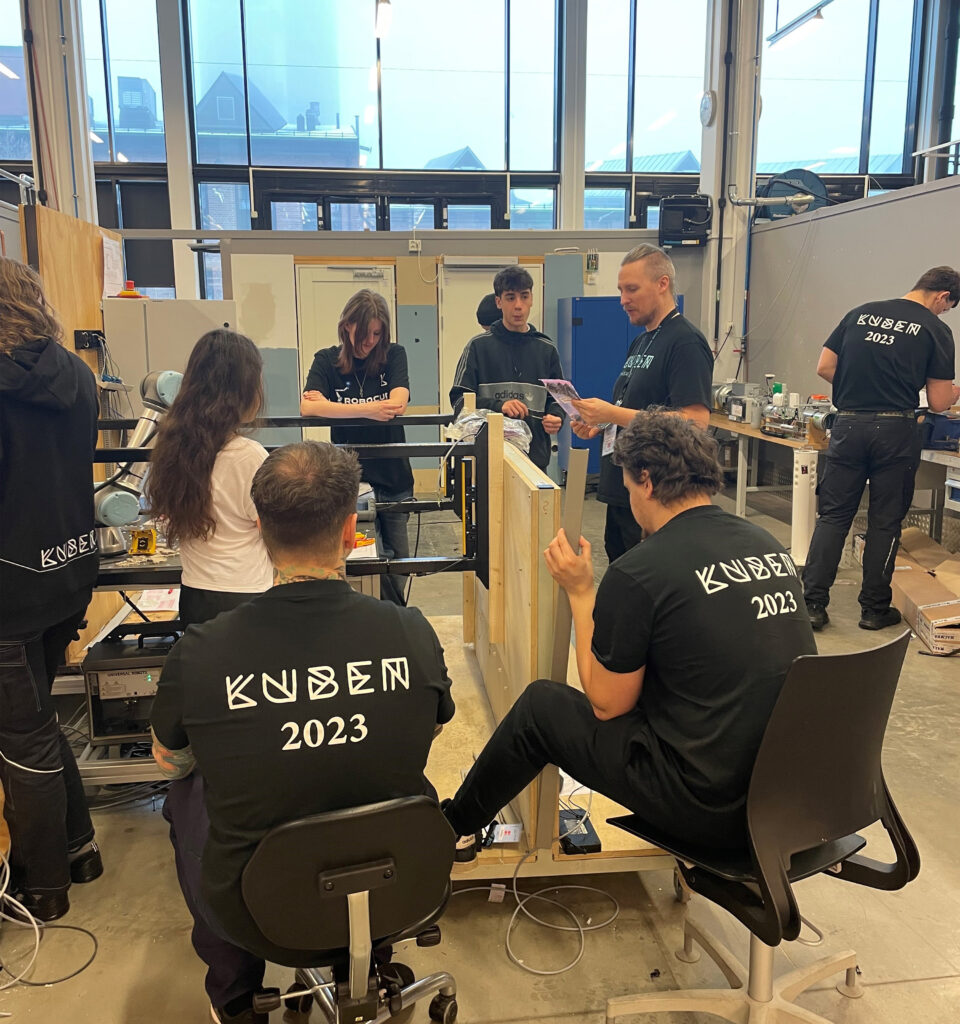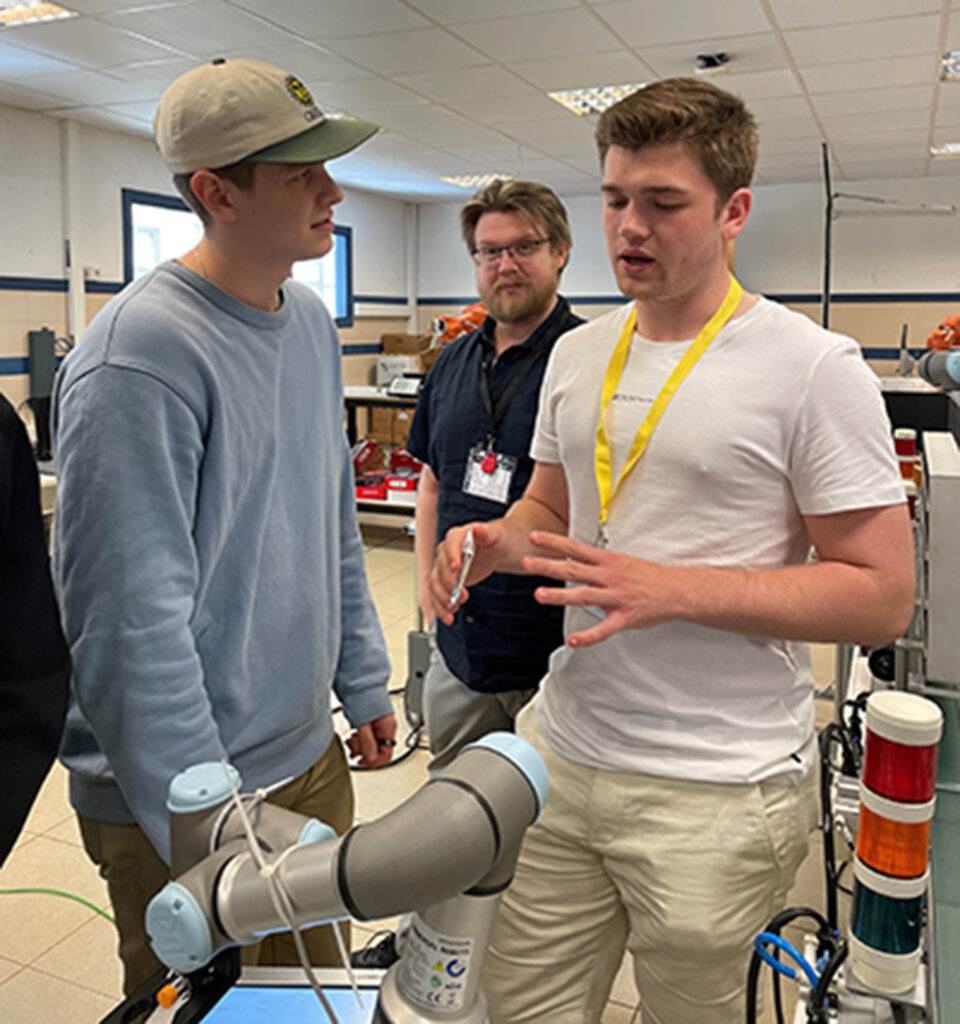RoboCup – Teaching safety in robotics
– A handbook for teachers

What is RoboCup and who is it for?
On this webpage you will find manuals and materials on how to teach students to use collaborative robots safely.
The manuals and materials are divided into four parts called MicroChallenges (MC) and numbered. These are constructed to be carried out independently. It is therefore not necessary to have completed MC1 in order to participate in MC2, etc. But you could also chose to run everyone of them in a sequence.
The material for RoboCup was developed as part of an Erasmus+ project called RoboCup – Safety in Robotics. The project and its MicroChallenges took place over two years; 2022 and 2023, and the four partners in the project were vocational schools in Finland, Denmark, Norway, and Spain. Each partner school hosted one MicroChallenge each. For each MicroChallenge there were 16 student participants: four from each partner school. The teachers involved in the project cooperated on developing these challenges, organising and carrying them out. The teachers and students shared their expertise and learned from each other.
We wish you the best of luck, and hope your experience with these MicroChallenges, whether you chose to do one or all of them, are as successful as ours were.




Objective
The objective of the MicroChallenges is to increase the knowledge and skills of students enrolled in collaborative robotics-related programs. The needs of the labour market is the driving for behind the project.
We believe that the ability to plan and organise the workload and actively participate in a group, as well as other social and interactive skills, is as important as technological skills and other content expertise. The learning goals for the MicroChallenge reflects this:
- Being aware of robot related hazards and being able to identify and mitigate them.
- Understanding basic safety guidelines for robotic applications.
- Identifying key elements related to robot safety.
- Applying provisions of safety standards in different operations with robots: design and manufacturing, programming, maintenance, and machine communication.
- Enhancing soft skills relevant to working life such as problem solving, teamwork, presentation skills, English communication, and time management.
There are many safety aspects one must consider when designing and using a collaborative robot. The aspects we have focused on in RoboCup are the following:
- Robot tool design Using a collaborative robot in a safe environment, but as it has tools that are sharp or has the possibility to trap fingers, is not safe and cannot be considered collaborative.
- Robot programming The main use of a robot is to perform automatable tasks. It should be possible to make some changes to the environment around the robot without rewriting the entire program. It should also be possible to copy a program from one robot to another, to save on labour.
- Use of safety equipment In the industry many robots cannot be used in a collaborative environment. This could be due to the tools used, the objects it is manipulating or the fact that the robot is not a collaborative robot. In these scenarios, additional safety features are needed, for example external sensors and safety switches.
Structure of a MicroChallenge
Each MicroChallenge lasts for a week and has a structure inspired by WorldSkills competitions. They start with team building, then presentation of the task, carrying out the task, and finally presentation and evaluation. Relevant companies are involved in evaluating and giving feedback on the final product.
During the students’ work, the teachers observe their progress and give feedback, paying special attention to: division of tasks according to each participants´s strengths, balanced participation, decision making, creativity, time management, communication among team members, cooperation within the team and between the different teams, information search and management, and stress management.
The MicroChallenges briefly explained
1. Get a grip
How to design and manufacture a robot gripper according to safety standards (3D printing).
2. Test for success
Programming and testing a gripper for a robot, to perform a certain task; moving objects safely.
3. Play safe
Safe access to the workspace with machine safety equipment.
4. Better together
Integration with PLC (programable logic controller) and HMI (human machine interface) communicating with the robot.
The future of RoboCup - Network for RoboCompetition
RoboCup was a great success for all partners, and we wanted to continue to cooperate and to reap the benefit of the hard work that was done to create the MicroChallenges. Therefore we decided to create Network for RoboCompetition with the four original RoboCup partners. We also welcome other institutions that are interested in joining us.
In the autumn of 2023 the very first RoboCompetition was hosted at Roskilde Technical School in Denmark, and the second will be held at Kuben Upper Secondary School in Oslo in February 2024.
Interested in learning more about the Network for RoboCompetition?
Contact: Kristin Skare | International Coordinator at Kuben | kristin.skare@osloskolen.no

Disclaimer

Funded by the European Union. Views and opinions expressed are however those of the author(s) only and do not necessarily reflect those of the European Union or the European Education and Culture Executive Agency (EACEA). Neither the European Union nor EACEA can be held responsible for them.
Creative Commons

This work; RoboCup – Teaching safety in robotics, is free of known copyright restrictions. CC0 1.0 Universal (CC0 1.0) Public Domain Dedication